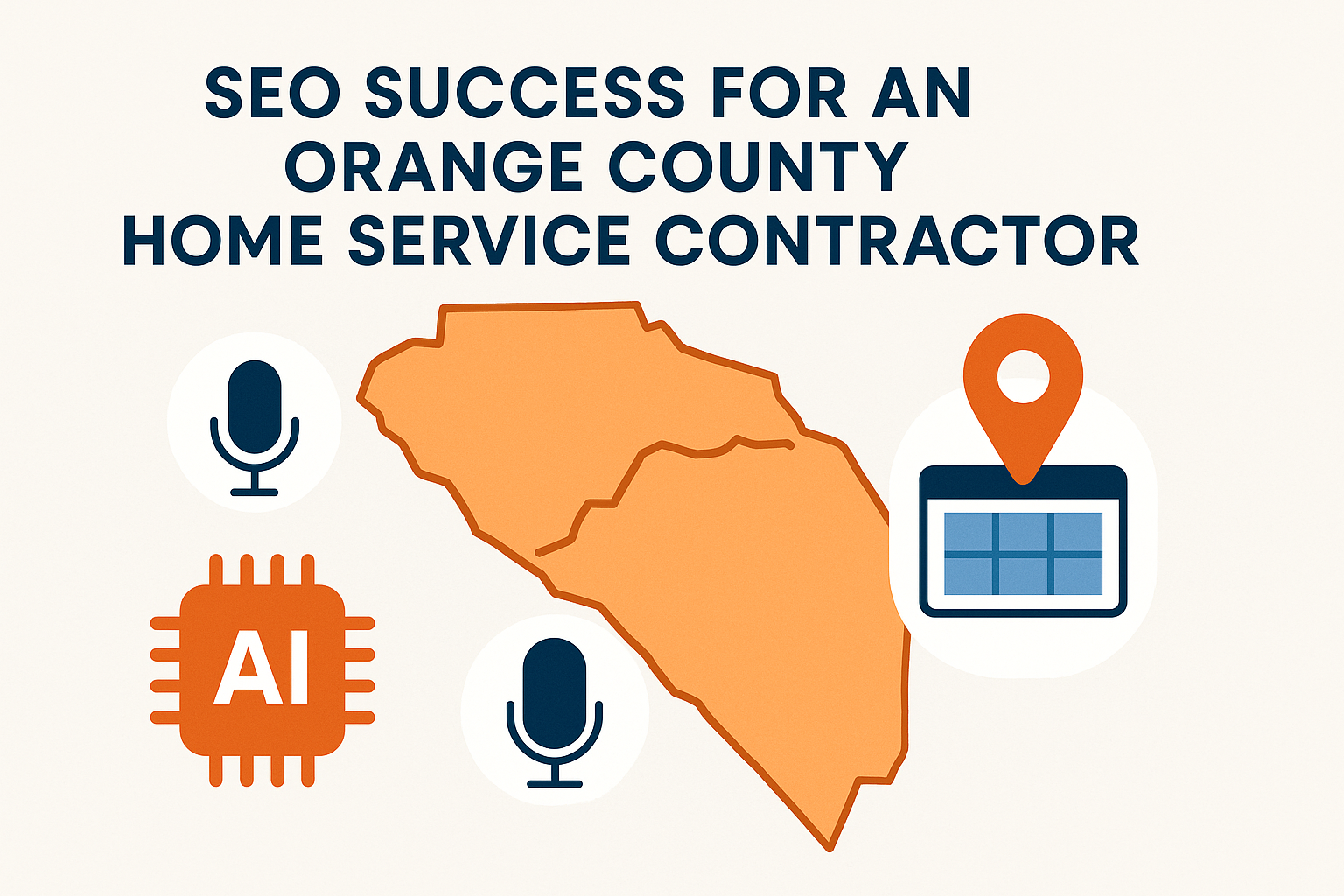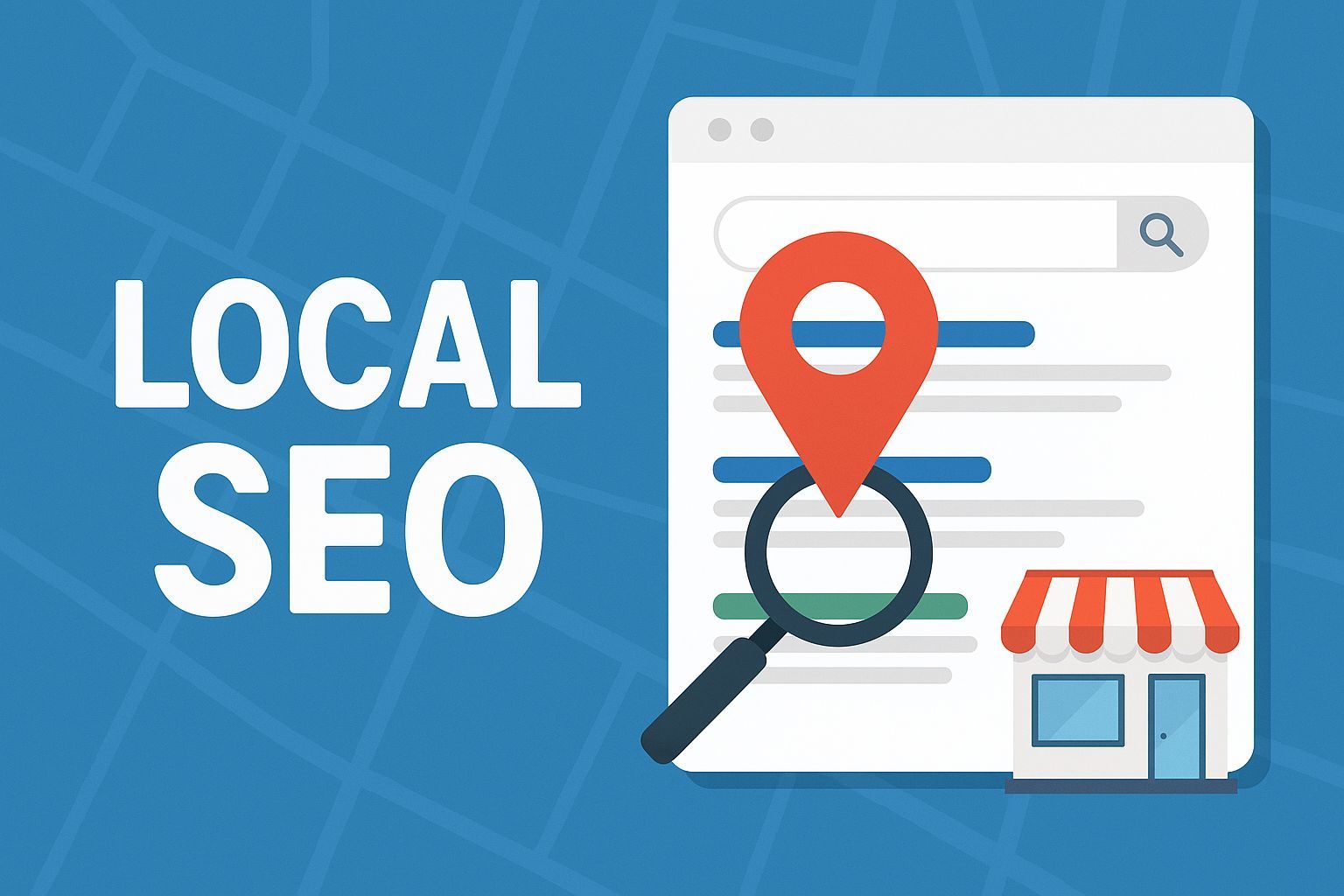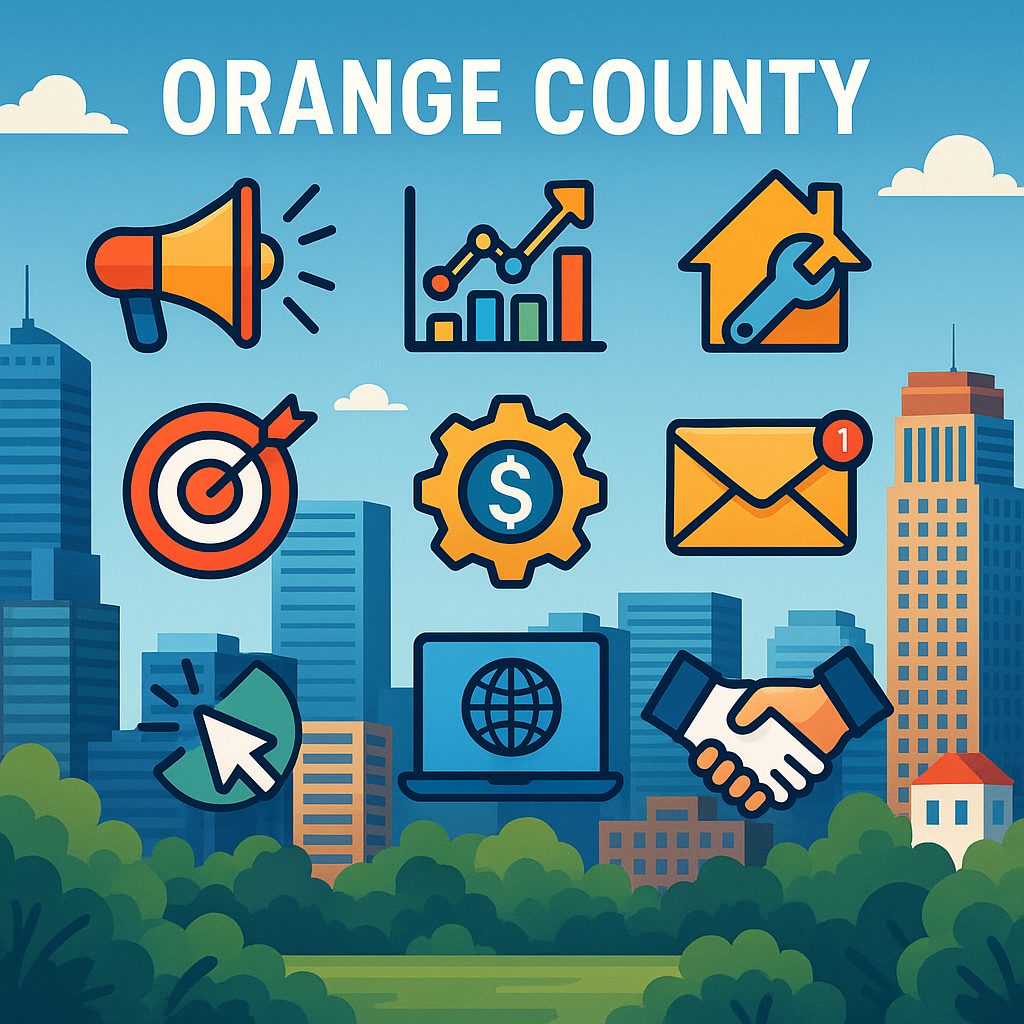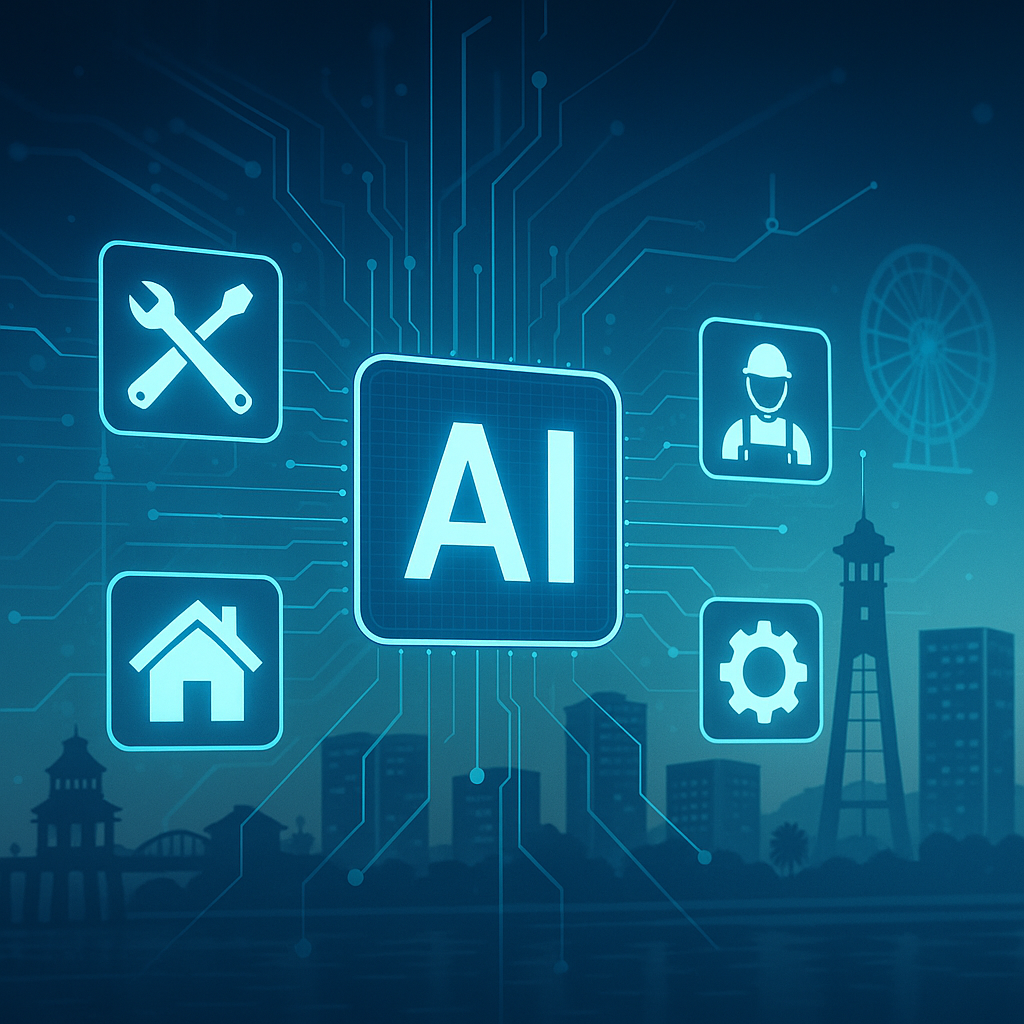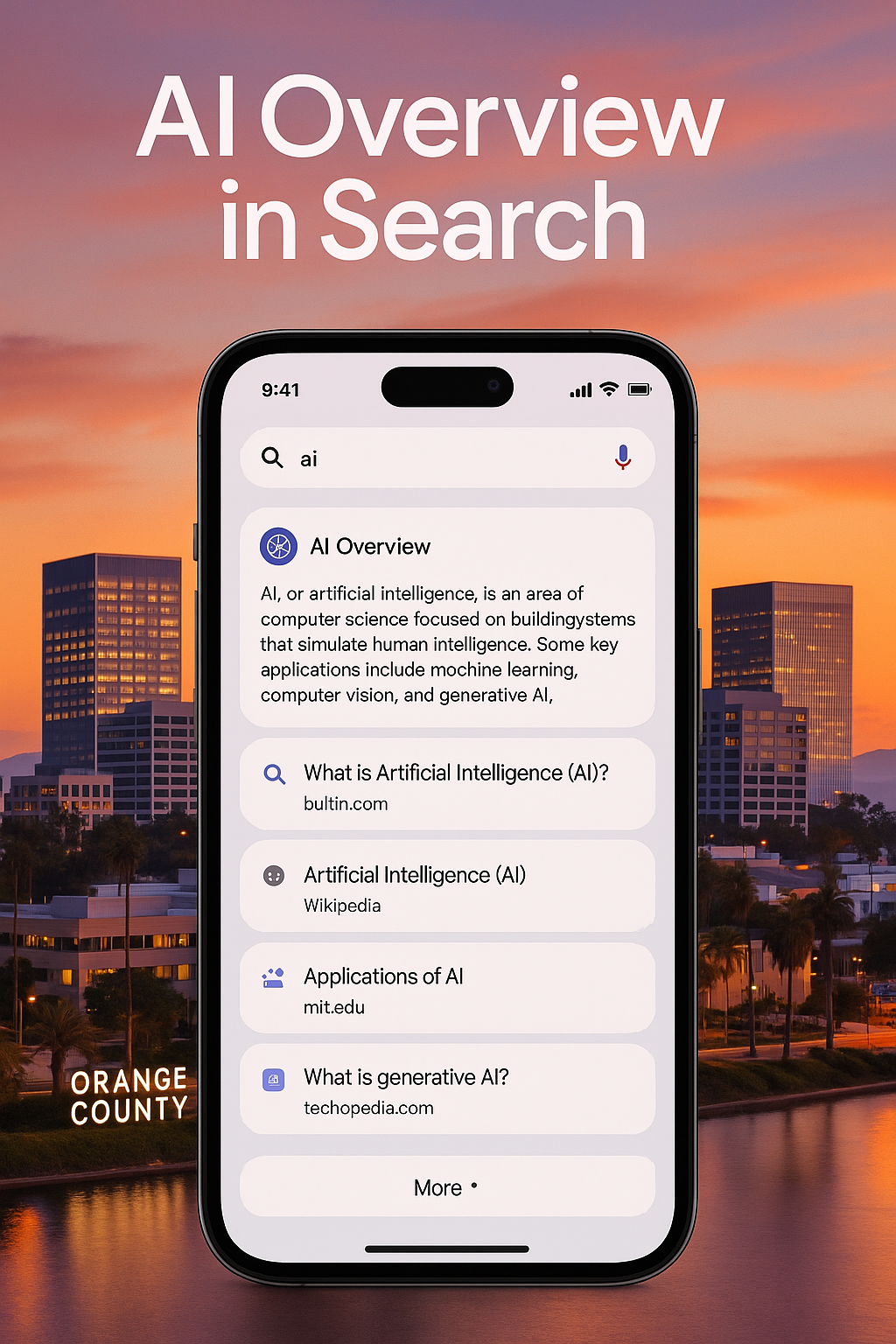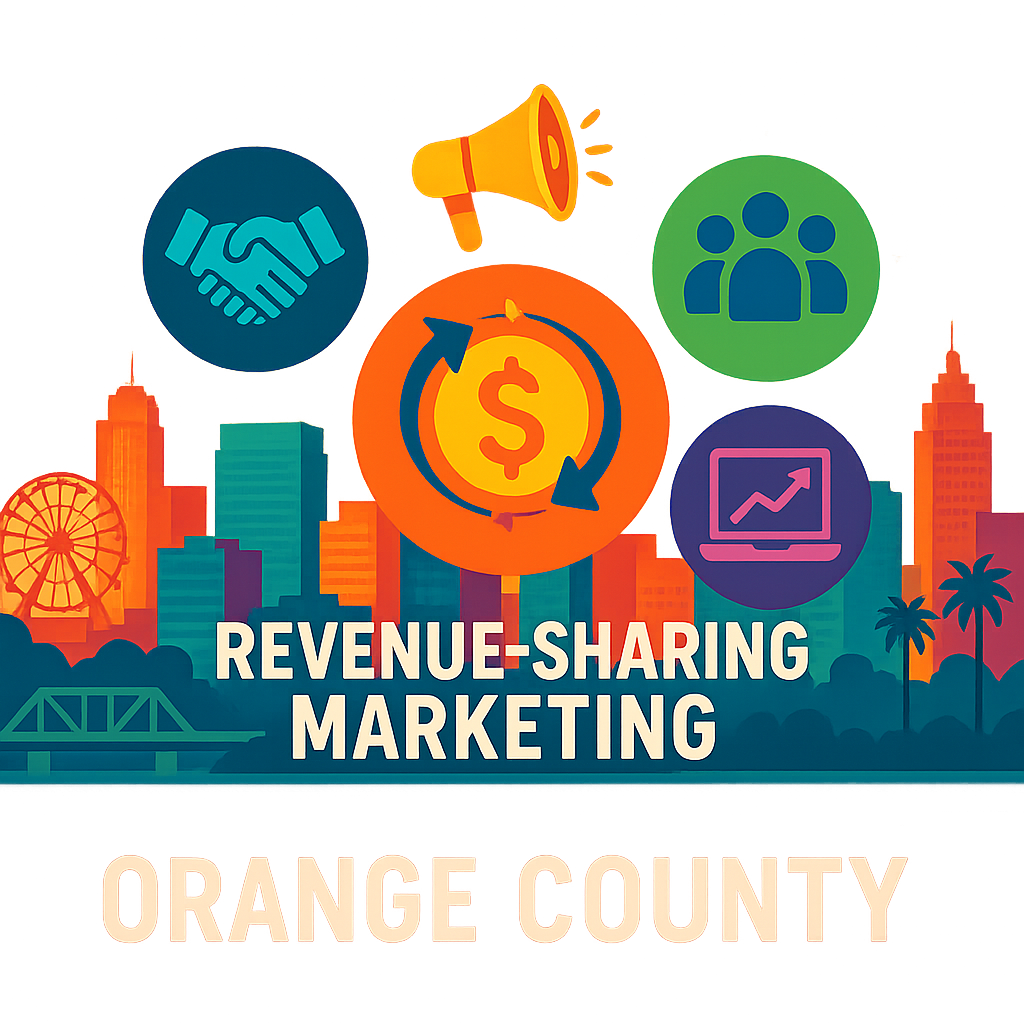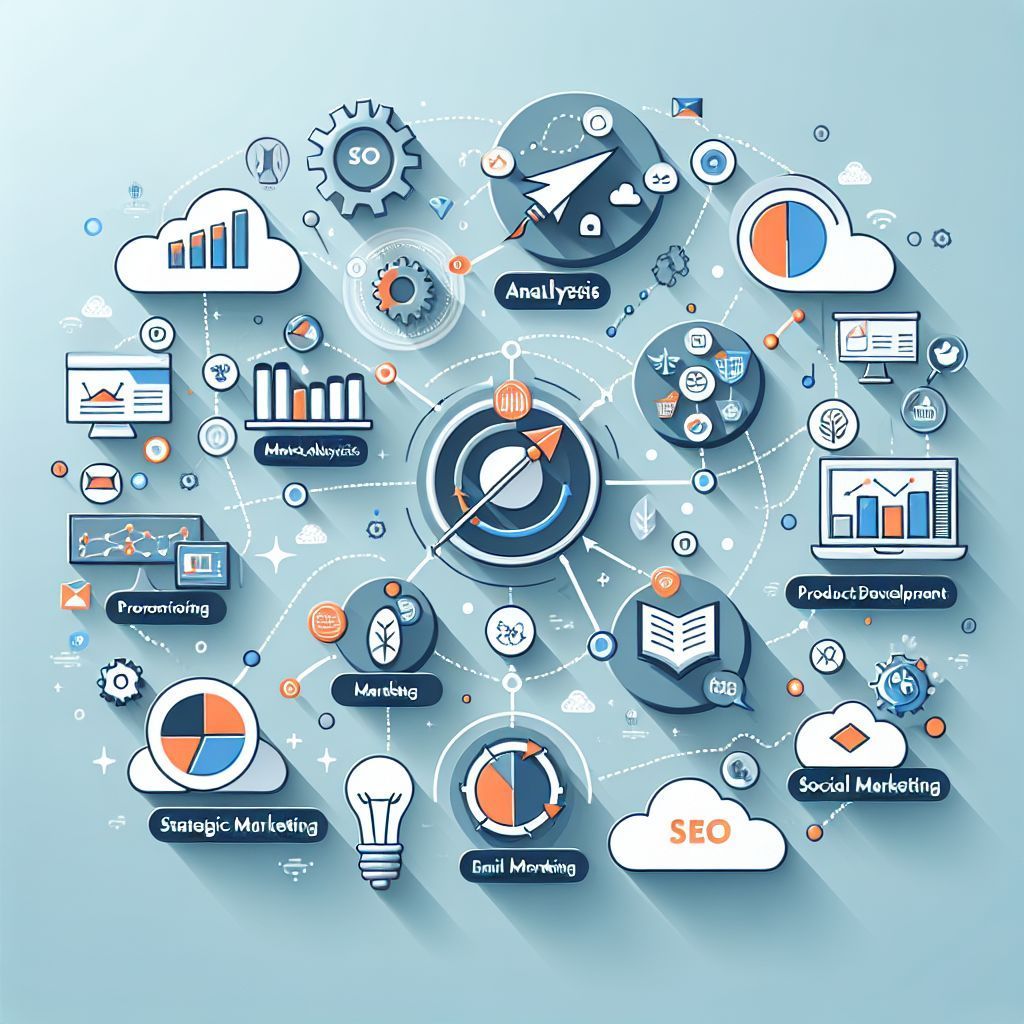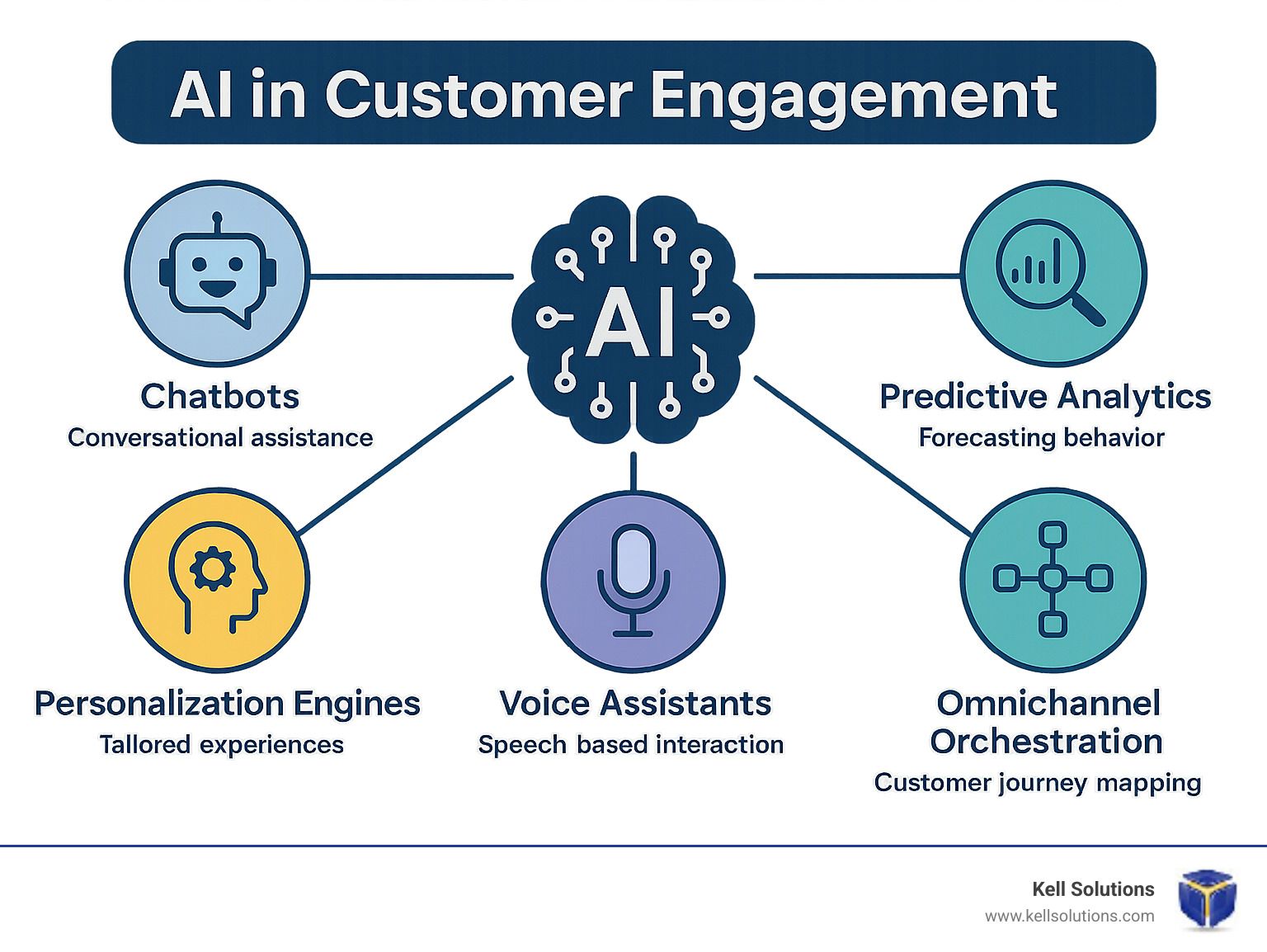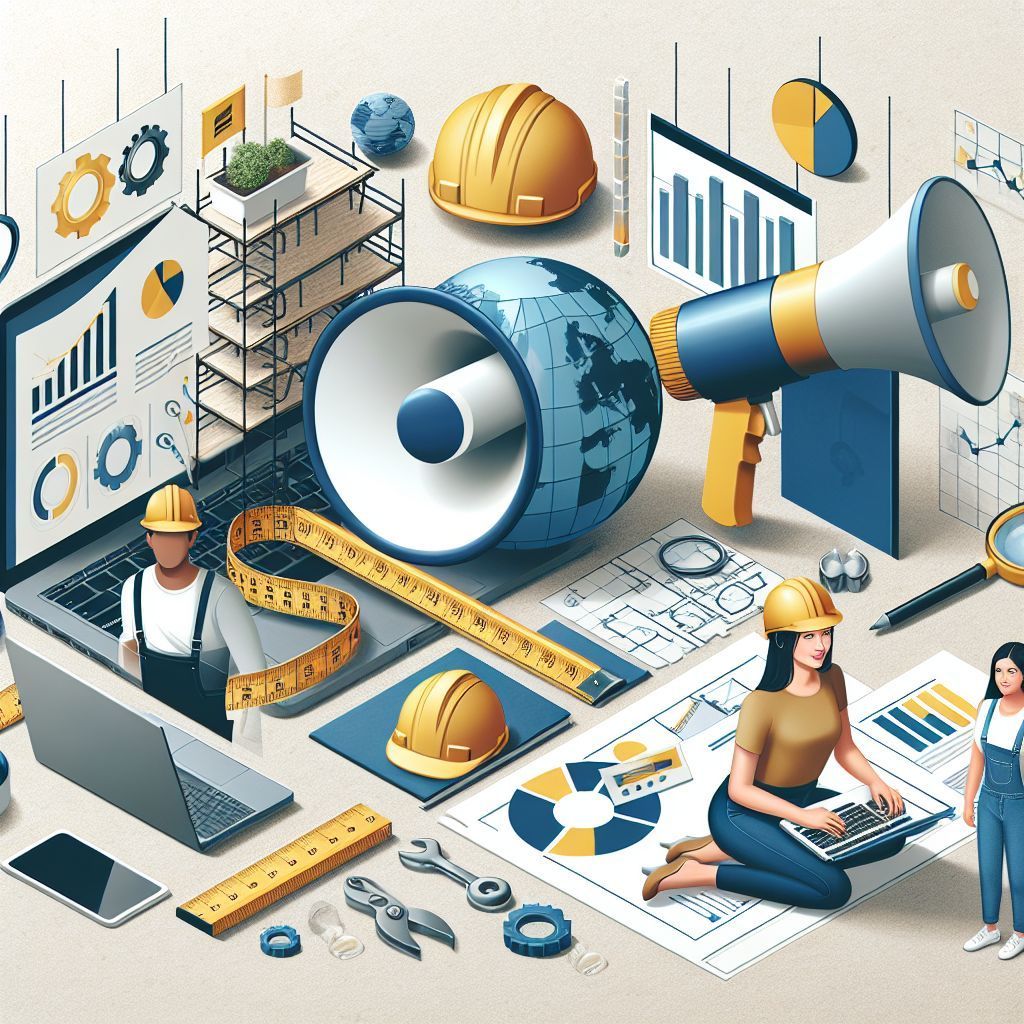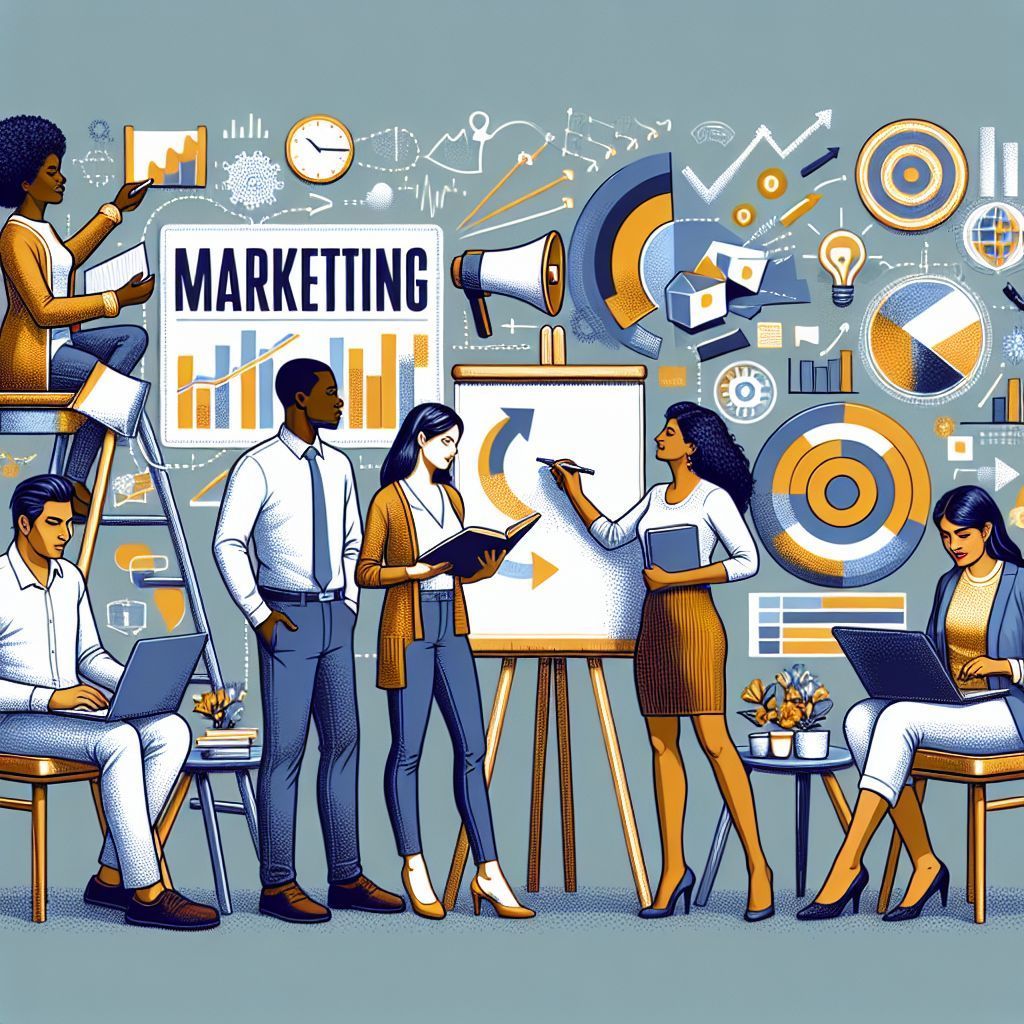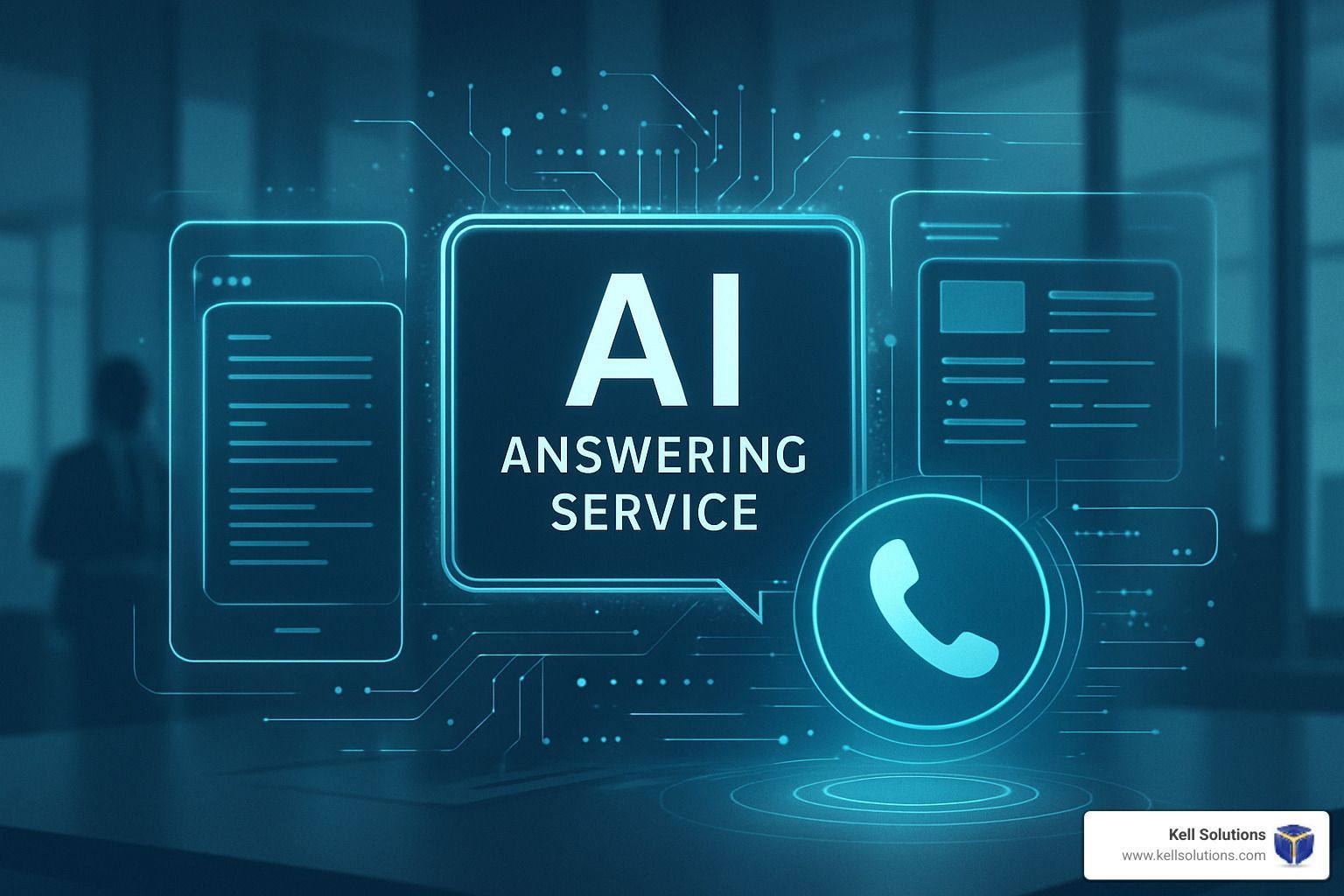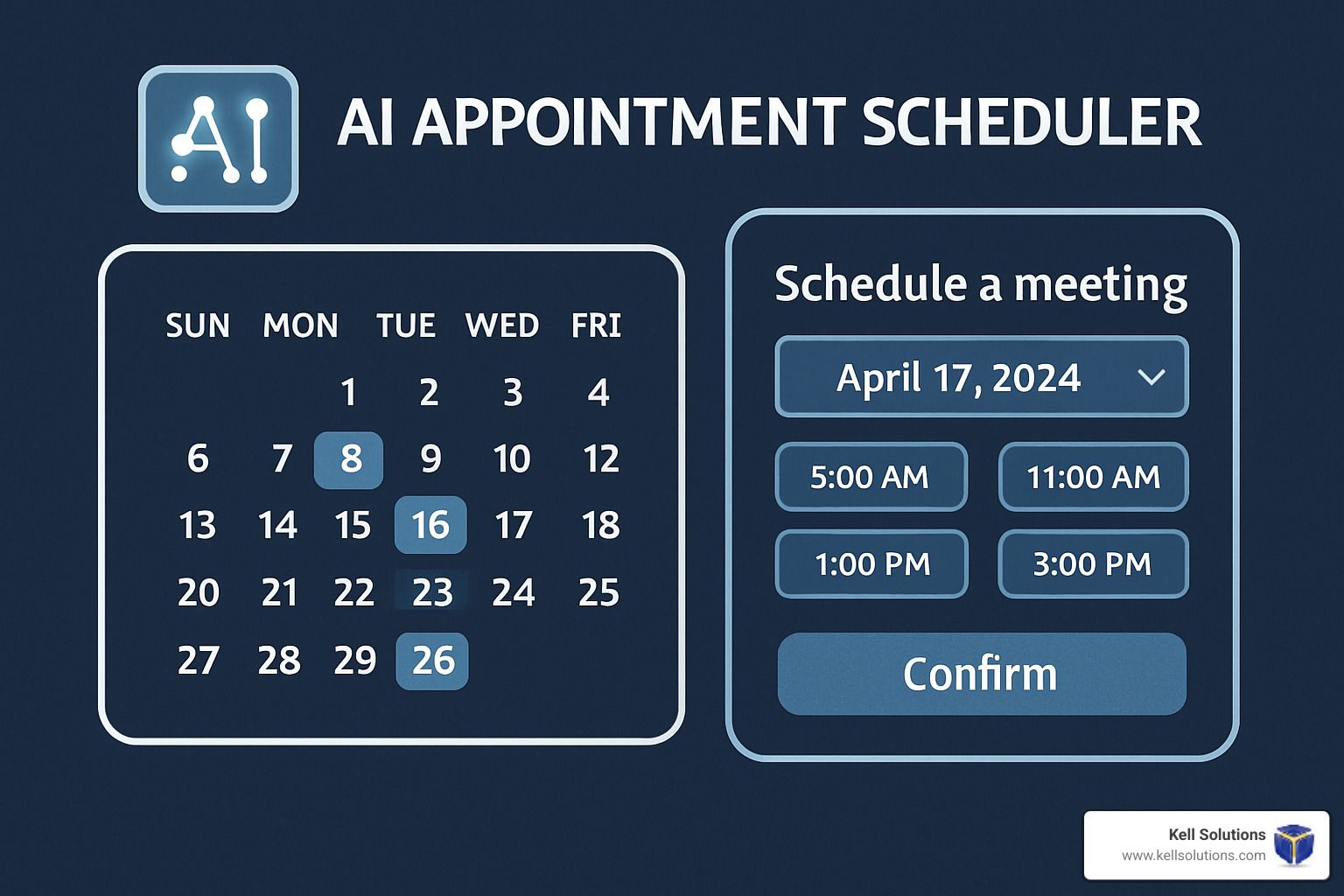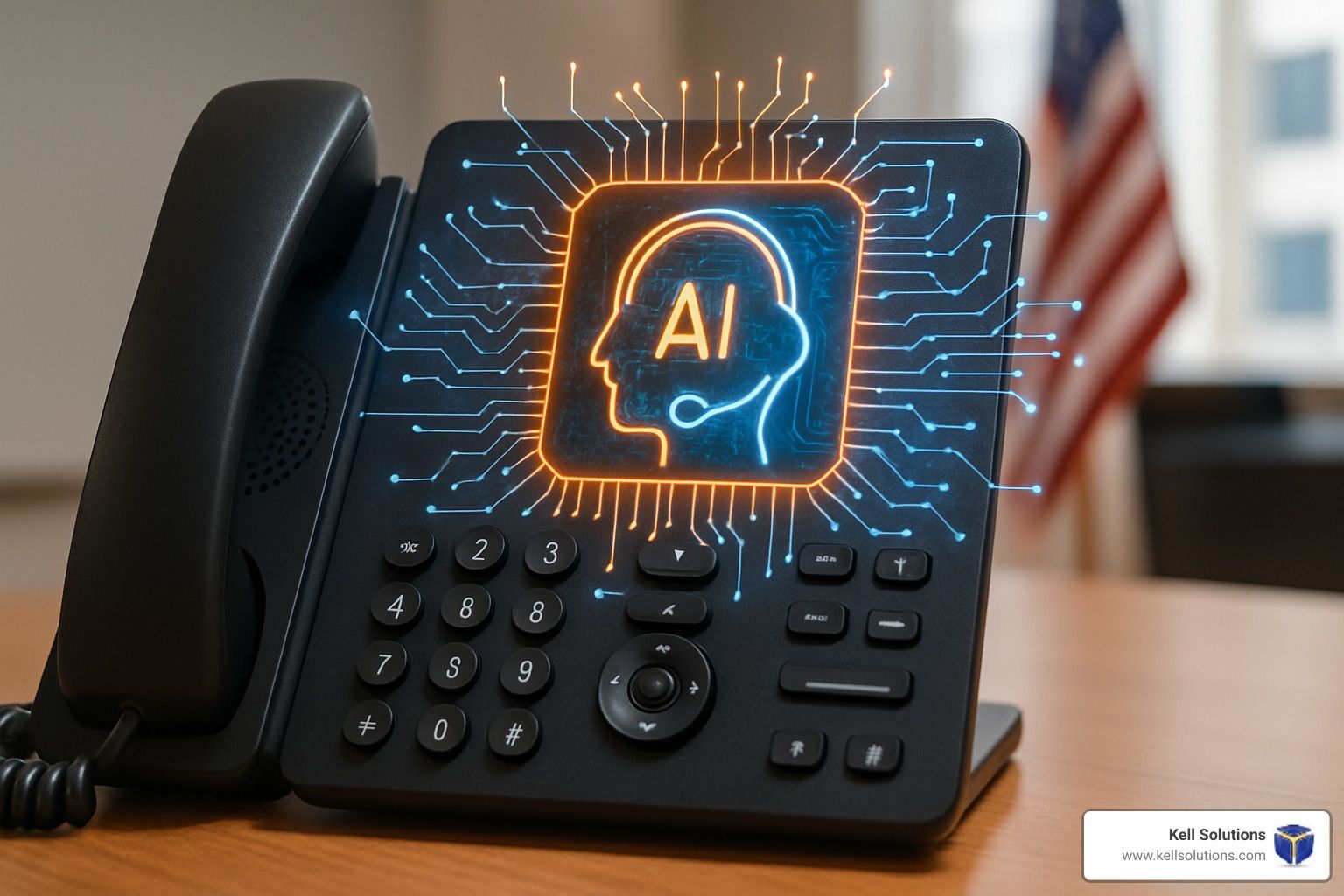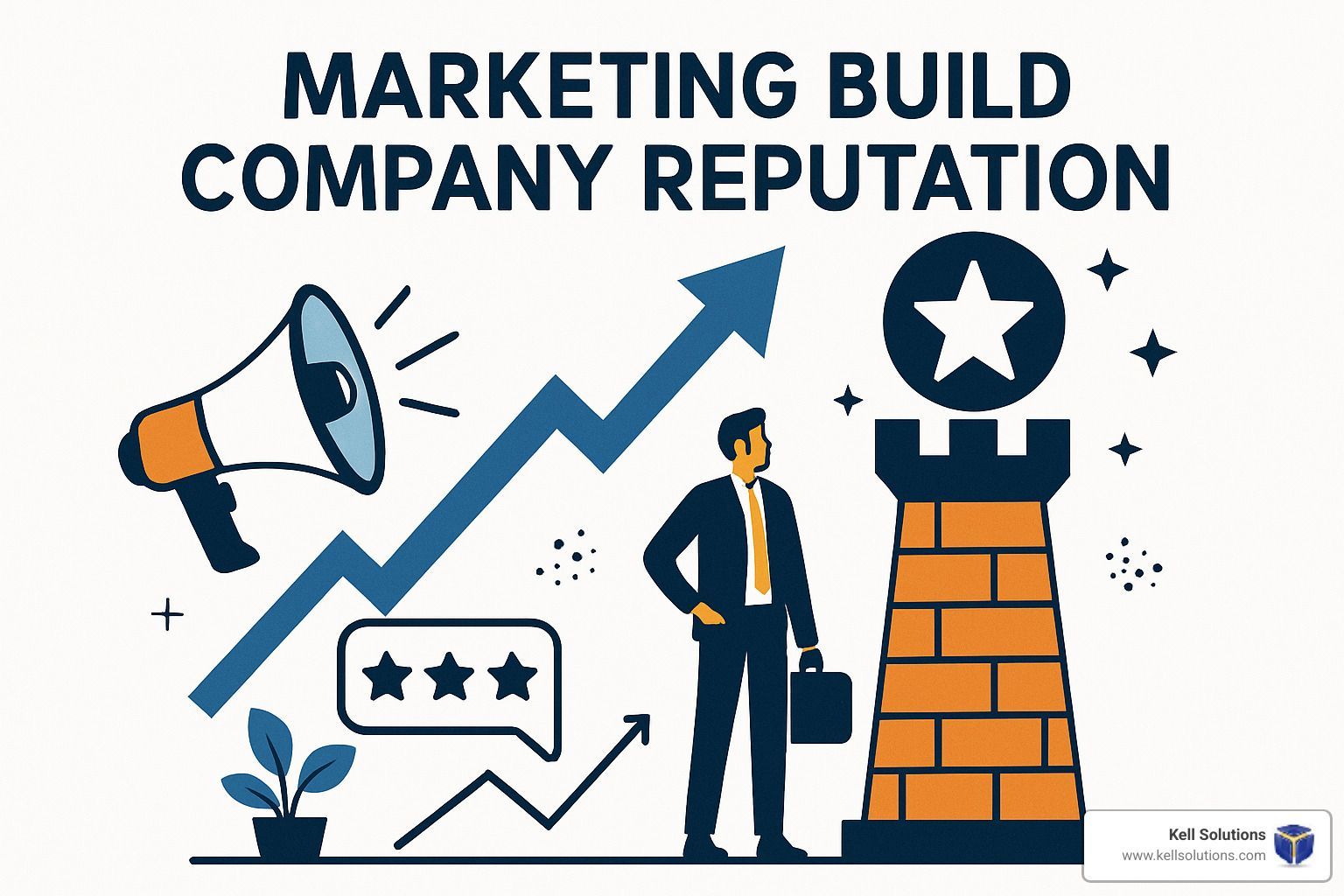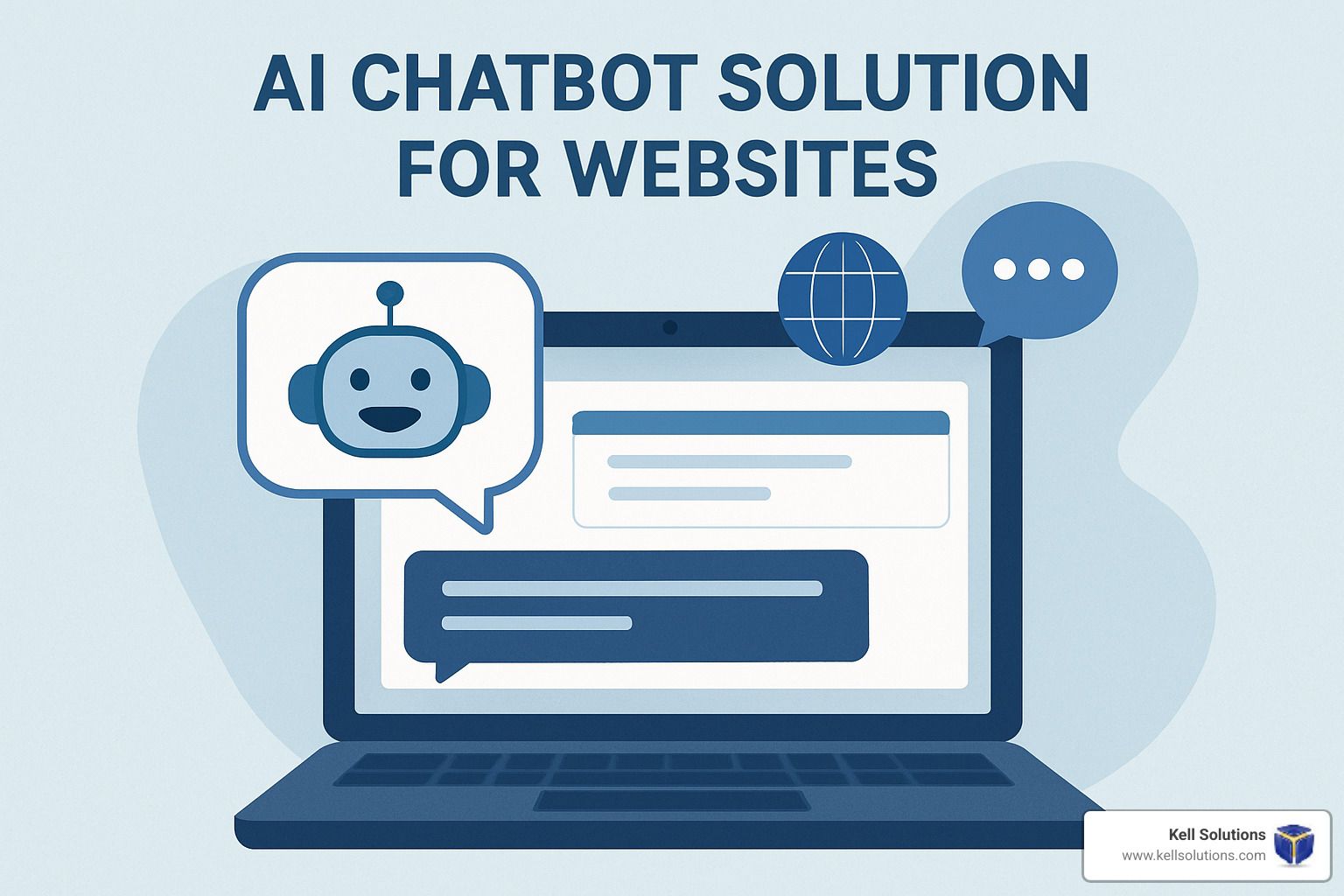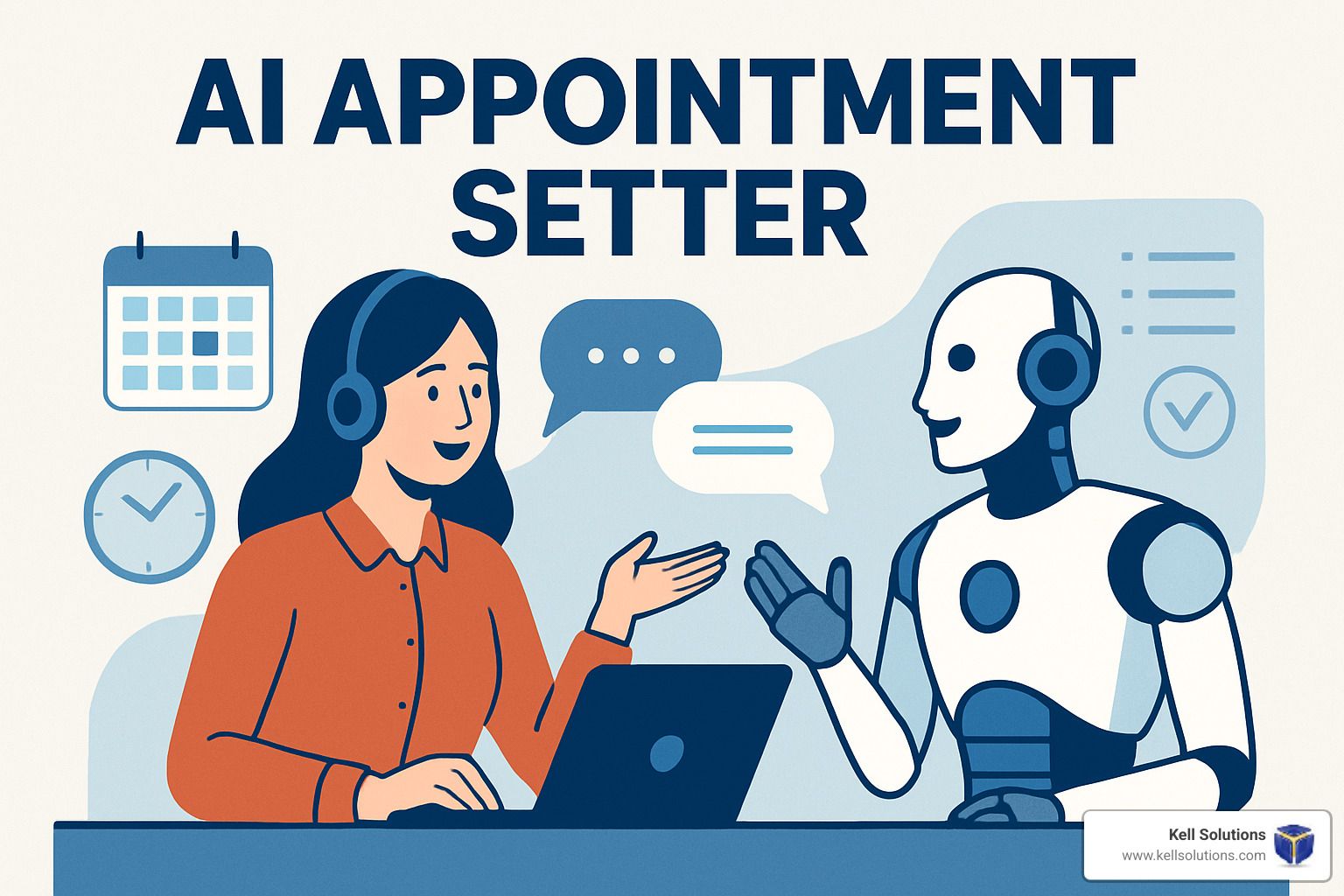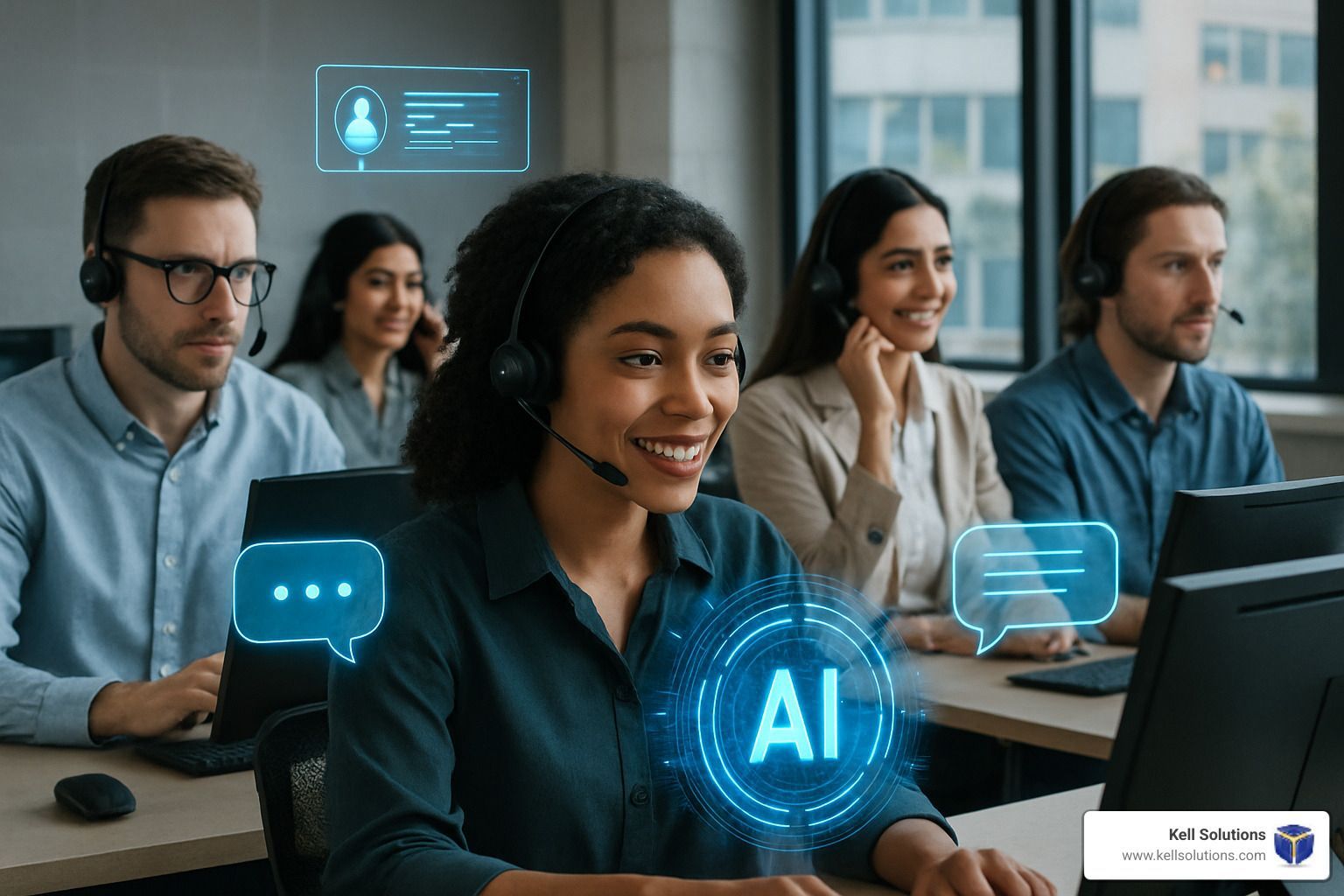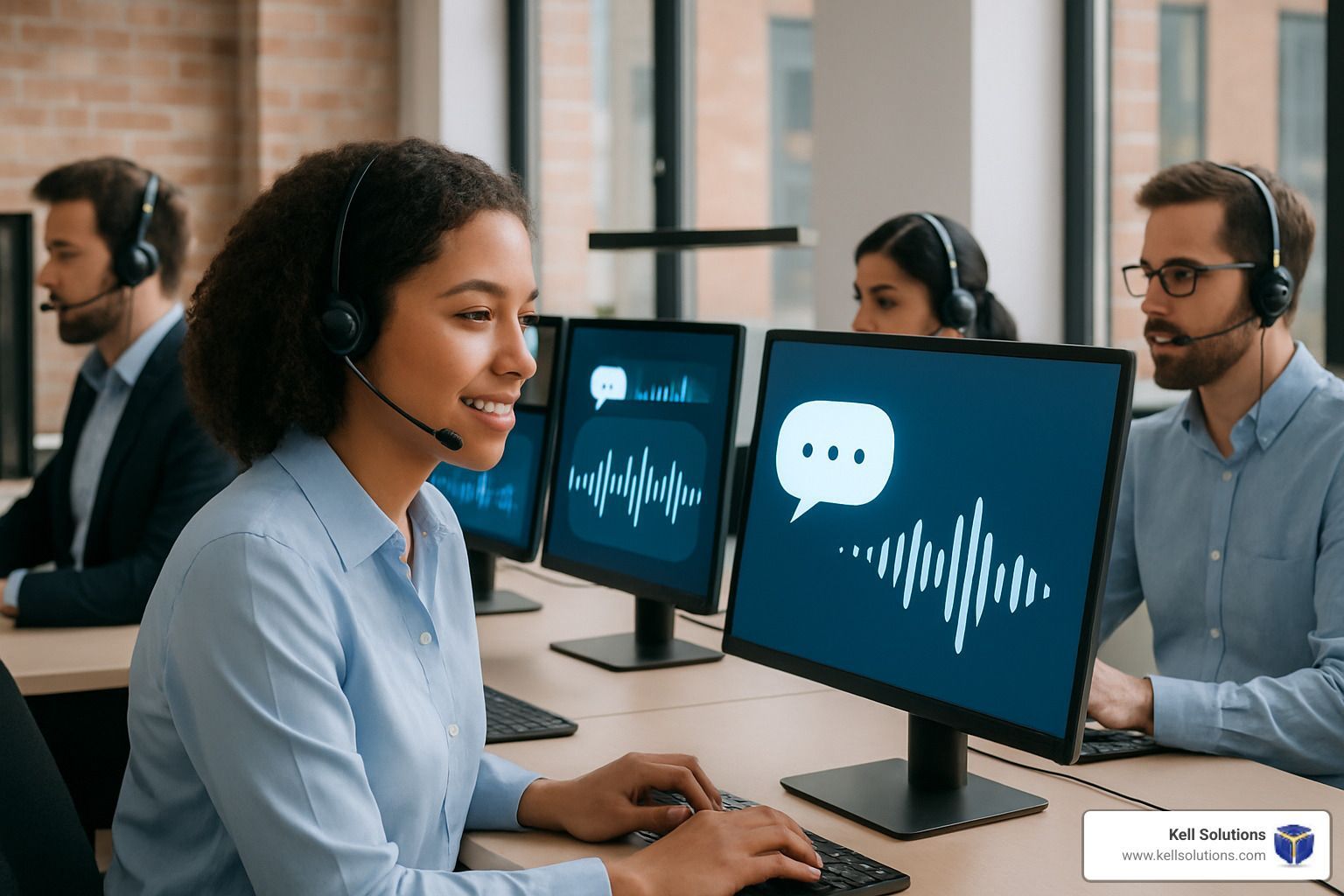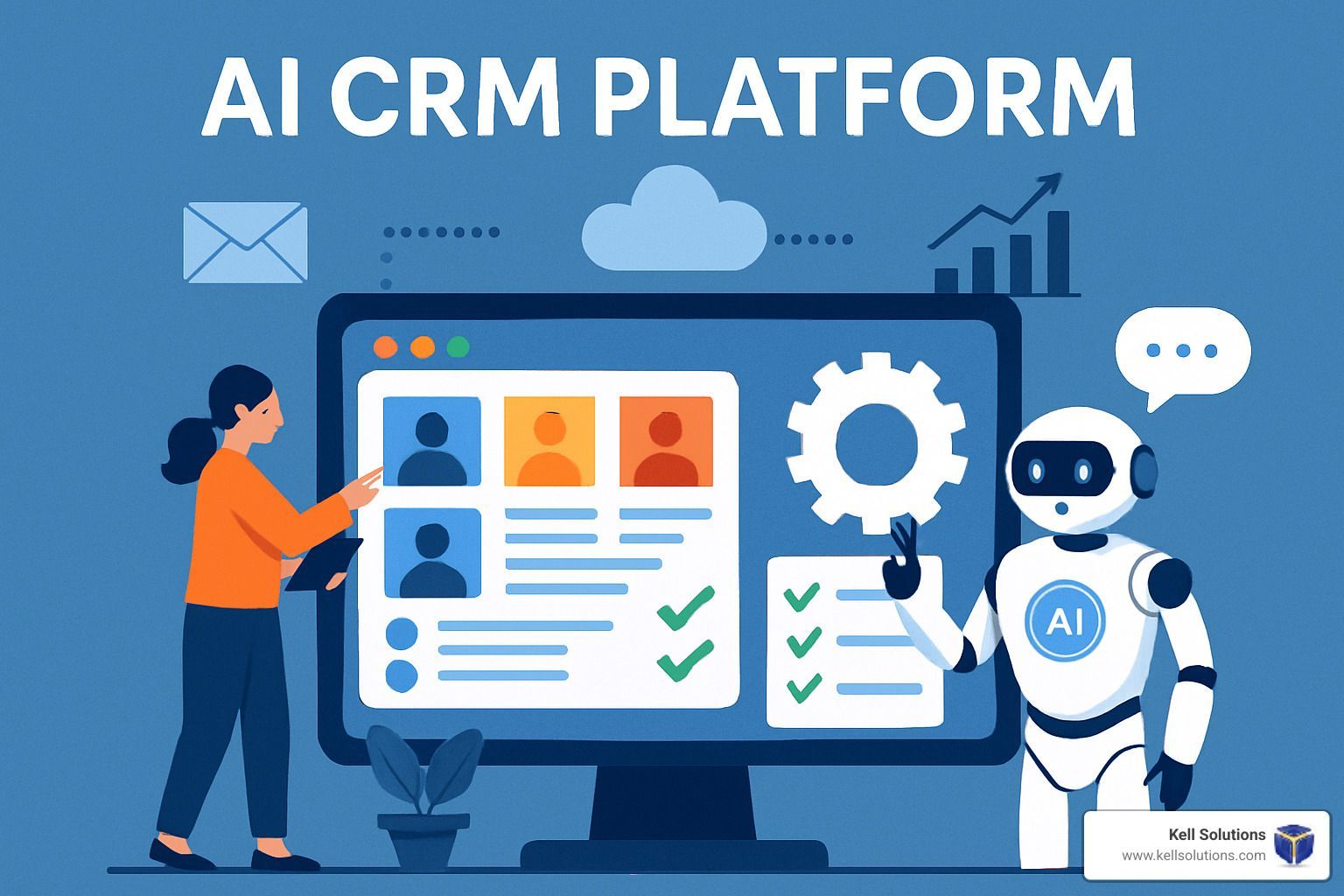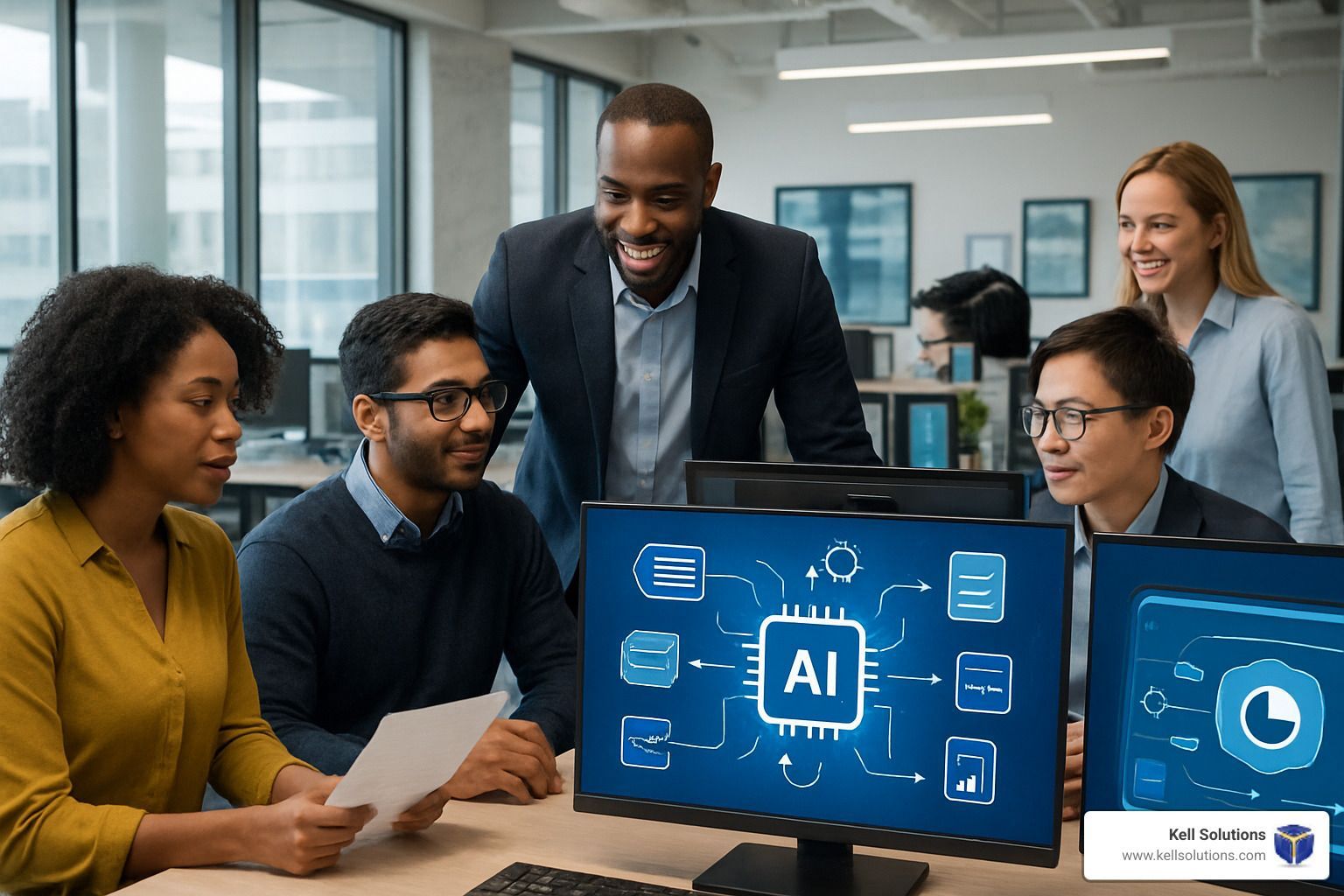AI Receptionist vs Traditional Receptionist: Pros, Cons & Benefits
Balancing Automation and Human Touch: A Data-Driven Guide to Front Desk Efficiency

Article-At-A-Glance
- AI receptionists can reduce reception costs by 85-90%, with annual expenses of $3,600-$10,000 compared to $57,000-$64,000 for human receptionists
- Traditional receptionists excel in complex emotional interactions, with 78% first-contact resolution for complicated issues versus AI's 54% escalation rate
- AI reception systems offer true 24/7/365 availability and can handle calls in an average of 22 seconds compared to 3-5 minutes for human staff
- Businesses implementing hybrid models that combine AI efficiency with human empathy report the highest customer satisfaction rates (92%)
- The decision between AI and traditional reception should be based on industry needs, with high-touch sectors benefiting from human interaction and high-volume operations gaining efficiency from automation
The Reception Revolution: AI vs Human at Your Front Desk
The battle between artificial intelligence and human receptionists is reshaping how businesses handle their front desk operations. As companies seek to optimize costs while maintaining quality customer service, the choice between AI and traditional reception has become increasingly complex. VoiceGenie AI by Kell Solutions is at the forefront of this transformation, offering businesses a way to revolutionize their customer interactions through cutting-edge AI technology that mimics the efficiency of human staff.
The decision isn't simply about replacing people with technology—it's about understanding where each option shines and where it falls short. Today's reception solutions range from fully human teams to completely automated systems, with many businesses finding success in the middle ground. With reception staff representing a significant operational expense, the financial implications alone warrant careful consideration of all available options.
Recent industry studies reveal striking differences in performance metrics between AI and human receptionists. While AI systems respond to calls in an average of 22 seconds compared to human response times of 3-5 minutes, human receptionists resolve 78% of complex queries on first contact compared to AI's high escalation rate for similar issues. These statistics highlight the fundamental tradeoff businesses face: efficiency and consistency versus empathy and adaptability.
Traditional Receptionists: Human Touch in a Digital World
Despite technological advances, human receptionists remain irreplaceable in certain aspects of front desk operations. They bring warmth, intuition, and adaptability that current AI cannot fully replicate. The value of a friendly face greeting clients or a reassuring voice during sensitive conversations continues to be a competitive advantage for businesses in high-touch industries.
Personalized Customer Experience That AI Can't Match
Human receptionists excel at remembering personal details about regular visitors—from coffee preferences to family updates—creating meaningful connections that foster loyalty. They instinctively adjust their communication style based on subtle cues like body language, tone of voice, and emotional state. This personalization translates directly to business outcomes, with legal firms employing traditional receptionists reporting 40% higher client retention rates compared to those using fully automated systems.
The ability to recognize when someone is having a bad day and respond with appropriate empathy or to celebrate a client's good news with genuine enthusiasm represents a level of emotional intelligence that current AI cannot match. These seemingly small interactions build the foundation of trust that sustains long-term business relationships and creates brand advocates.
Complex Problem-Solving and Emotional Intelligence
When unusual situations arise, human receptionists draw on experience, intuition, and creative thinking to find solutions that may not follow standard protocols. A study of hospice care providers found that 68% of families preferred speaking to humans when discussing end-of-life care arrangements, highlighting the critical role of empathy in sensitive conversations. Human staff can detect urgency in a caller's voice, prioritize emergencies appropriately, and provide reassurance during stressful situations.
The ability to make judgment calls based on context represents a significant advantage for traditional receptionists. They can determine when rules should be bent to accommodate special circumstances and when strict adherence is necessary. This flexibility allows for personalized problem resolution that builds goodwill and turns potentially negative experiences into positive ones.
Cultural Fluency and Nuanced Communication
Human receptionists navigate cultural differences with natural sensitivity, understanding regional customs, communication styles, and business etiquette across different backgrounds. They recognize and adapt to communication preferences, whether a client appreciates direct conversation or prefers more formal interaction. While AI systems support translation for numerous languages, bilingual human receptionists achieve 98% accuracy in idiom-rich conversations compared to 82% for machines.
The ability to read between the lines during conversations allows human receptionists to gather information that isn't explicitly stated. They can sense hesitation, confusion, or dissatisfaction and address these concerns proactively. This intuitive understanding of human communication creates smoother interactions and prevents misunderstandings that could damage business relationships.
Security and Confidentiality Advantages
Human receptionists can effectively manage confidential information with discretion and judgment that AI systems may struggle to replicate. They understand when conversations should be taken to private areas or when sensitive documents need special handling. This natural understanding of privacy concerns is particularly valuable in industries like healthcare, legal services, and financial consulting where confidentiality breaches can have serious consequences.
Traditional receptionists also serve as a physical security layer, identifying potential security threats and managing access to restricted areas. They can recognize regular visitors, question unfamiliar faces, and make judgment calls about who should be granted entry. This human security element provides peace of mind that purely digital systems cannot match, especially for businesses handling valuable assets or sensitive information.
AI Receptionists: The Digital Front Desk Revolution
The rise of AI reception systems has transformed front desk operations with unprecedented efficiency and consistency. These digital assistants leverage natural language processing, machine learning, and integration capabilities to handle routine tasks with remarkable precision. For many businesses, AI receptionists represent not just cost savings but operational improvements that were previously impossible.
Modern AI reception platforms like VoiceGenie AI are built on sophisticated frameworks trained on millions of conversations, enabling them to understand context, recognize intent, and respond appropriately to a wide range of inquiries. This technology continues to advance rapidly, with each interaction helping the system become more effective through continuous learning algorithms.
24/7 Availability Without Overtime Costs
AI receptionists provide true round-the-clock service without additional costs for late hours, weekends, or holidays. This constant availability ensures that no call goes unanswered regardless of when it comes in. For businesses operating across multiple time zones or serving clients with unpredictable schedules, this represents a significant competitive advantage.
The elimination of sick days, vacations, and lunch breaks means consistent coverage without interruption. Clients calling at 3 AM receive the same level of service as those calling during peak business hours. This reliability translates to improved customer satisfaction and prevents lost opportunities that occur when calls go to voicemail.
Multi-Channel Communication Capabilities
Today's AI reception systems seamlessly handle interactions across voice, text, email, and web chat platforms. This multi-channel approach allows businesses to meet customers wherever they prefer to communicate. The integration between channels creates a cohesive experience where information from a phone call can be immediately accessible during a subsequent web chat, creating conversation continuity that enhances the customer experience.
AI receptionists excel at routing inquiries to the appropriate department or team member based on sophisticated decision trees and keyword recognition. This intelligent routing reduces transfer errors and ensures that customers reach the right person without frustrating delays. Many systems can even prioritize communications based on urgency, ensuring that time-sensitive matters receive immediate attention. For more insights on this transformation, explore how the integration of artificial intelligence into front desk operations has revolutionized business processes.
- Voice recognition capabilities that identify callers and retrieve their history
- Automated text follow-ups after phone conversations
- Email confirmation of appointments scheduled through any channel
- Web chat features that can escalate to voice calls when needed
- Social media integration for comprehensive communication management
Multilingual Support Across 10+ Languages
AI reception systems offer instant translation and multilingual support that would require an entire team of human polyglots to match. Leading platforms support 18+ languages through integrated translation tools, allowing businesses to serve diverse client bases without specialized staff. This capability is particularly valuable for companies with international operations or those located in culturally diverse regions.
The quality of machine translation continues to improve dramatically, with context-aware systems that understand industry-specific terminology across multiple languages. While human translators still outperform AI for idiom-rich conversations, the gap is narrowing with each technological advancement. For standard business communications, AI translation achieves professional-level quality that satisfies most customer needs.
Consistent Performance Without Human Fatigue
AI receptionists maintain the same level of service quality regardless of call volume or time of day. Unlike human staff who may experience fatigue during busy periods or toward the end of shifts, AI systems deliver consistent responses without variation. This reliability ensures that the hundredth caller of the day receives the same professional greeting and attention as the first.
The elimination of emotional fluctuations means that personal issues, difficult callers, or workplace stress never affect service quality. AI receptionists follow protocols precisely every time, creating predictable interactions that businesses can confidently build their customer experience around. This consistency extends to data collection, with AI systems gathering complete information for every interaction without the occasional oversights that occur with human staff.
Scalability for Growing Businesses
As call volumes increase, AI reception systems can scale instantly without additional hiring, training, or workspace considerations. This elasticity allows businesses to handle seasonal fluctuations or growth spurts without service disruptions. A system that handles 50 calls today can process 500 tomorrow without any significant changes to the infrastructure or costs.
The scalability extends beyond simple call volume to include expanded functionality as business needs evolve. Most AI platforms offer modular designs where new capabilities can be activated as required, whether that's additional language support, integration with new business systems, or advanced analytics. This flexibility allows businesses to start with basic reception functions and grow into more sophisticated implementations without replacing the entire system.
Cost Comparison: The Bottom Line for Your Business
When evaluating reception options, cost considerations often drive decision-making. Traditional receptionists represent a significant investment, while AI solutions offer substantial savings that can transform operational budgets. A comprehensive financial analysis reveals dramatic differences in both initial and long-term expenses between these options.
Traditional Receptionist Salary and Benefits
Human receptionists typically cost between $35,000-$45,000 in base salary, with total compensation reaching $57,000-$64,000 annually when benefits, taxes, and administrative expenses are included. This baseline doesn't account for overtime, paid time off, or sick leave that can further increase costs. For businesses requiring coverage beyond standard hours, additional staff may be needed, potentially doubling reception expenses.
Training and onboarding new receptionists adds another layer of expense, with industry averages suggesting $4,000-$7,000 per new hire. With receptionist turnover averaging 28% annually in some sectors, these recruitment costs become a recurring burden. Physical workspace requirements including desk space, computer equipment, and break room facilities further contribute to the total investment in human reception staff.
AI Receptionist Subscription Models and Setup Costs
AI reception systems typically operate on monthly subscription models ranging from $300-$850 per month ($3,600-$10,200 annually), depending on features and call volume. Initial setup fees average $1,000-$2,500 for configuration, integration, and customization to match business requirements. Most providers offer tiered pricing models that allow businesses to scale services as needed without substantial cost increases.
The predictable nature of AI subscription costs eliminates budget uncertainties associated with human staffing variables like overtime, benefits increases, or unexpected leave. These systems typically include automatic updates and technical support within the subscription price, preventing additional maintenance expenses. For businesses with multiple locations, AI reception can be centralized without duplicating costs across each site.
Hidden Costs You Need to Consider
Beyond obvious expenses, human receptionists require management oversight, performance reviews, and ongoing professional development that consume leadership time and resources. Unexpected absences may necessitate temporary staff at premium rates, while workplace conflict or performance issues can reduce productivity across teams. These soft costs rarely appear in budget spreadsheets but significantly impact operational efficiency.
AI systems bring their own hidden considerations, including potential integration expenses with existing business software, customization for specific industry terminology, and occasional system updates that may require brief service interruptions. Some businesses also maintain minimal human backup for complex situations that AI cannot handle, creating a hybrid cost structure that must be factored into financial projections.
Annual Cost Comparison: AI vs. Traditional Receptionist
AI Receptionist: $3,600-$10,200 subscription + $1,000-$2,500 setup (first year only)
Human Receptionist: $57,000-$64,000 salary/benefits + $4,000-$7,000 recruitment/training
Potential Savings: $47,000-$56,000 annually (85-90% reduction)
ROI Analysis for Different Business Sizes
Small businesses (under 20 employees) typically see the most dramatic ROI from AI reception, with cost recovery occurring within 1-2 months and savings representing a significant percentage of operational expenses. The elimination of a full-time salary can free up resources for revenue-generating activities, creating compound benefits beyond direct cost savings. For businesses handling 30-50 daily calls, AI systems deliver approximately 300% ROI within the first year.
Mid-sized organizations often implement hybrid models where AI handles routine interactions while specialized human staff manage complex cases. This approach typically delivers 150-200% ROI while maintaining service quality across all interaction types. Large enterprises leverage AI to standardize reception across multiple locations, eliminating regional quality variations while reducing staffing requirements by 40-60% for comparable service levels.
Performance Face-Off: Who Handles What Better?
Beyond cost considerations, the performance characteristics of AI and human receptionists reveal distinct strengths and weaknesses that influence the reception experience. Understanding these differences helps businesses align their reception approach with specific operational requirements and customer expectations.
Call Handling Speed and Accuracy
AI receptionists excel in rapid response, answering calls within an average of 22 seconds compared to 3-5 minutes for human staff during busy periods. This efficiency prevents abandoned calls and creates positive first impressions. AI systems also demonstrate near-perfect accuracy in collecting standardized information like names, contact details, and basic request categories, eliminating transcription errors that sometimes occur with manual note-taking.
For routine inquiries that follow predictable patterns, AI receptionists provide consistent, accurate responses without variation. However, for unusual requests or complex scenarios requiring judgment calls, human receptionists maintain a significant advantage in understanding implicit needs and finding creative solutions. This performance gap is particularly evident when callers struggle to articulate their requirements clearly or when requests span multiple service categories.
Appointment Scheduling Efficiency
Modern AI systems integrate directly with calendar applications, allowing instantaneous appointment booking without the back-and-forth often required with human scheduling. This integration prevents double-booking errors and automatically applies business rules like buffer times between appointments. The best AI platforms can analyze scheduling patterns to optimize time allocation and maximize productive hours.
Human receptionists bring valuable context awareness to scheduling, understanding which clients might need extra time or which appointments should be grouped for efficiency. They can make judgment calls about urgency that might override standard scheduling protocols and provide personalized guidance about appointment preparation. This contextual intelligence becomes particularly valuable for businesses with complex scheduling requirements or where appointments vary significantly in scope and duration.
Customer Satisfaction Ratings
Recent industry studies reveal a complex satisfaction landscape, with AI systems achieving 89% satisfaction for routine interactions while human receptionists maintain 94% ratings for complex or emotionally charged situations. The satisfaction gap narrows significantly for digital-native customers under 35, who often prefer the speed and directness of AI systems. Healthcare providers using hybrid models (AI + human staff) achieve the highest overall satisfaction at 92%, suggesting complementary strengths rather than an either/or proposition.
Customer feedback indicates that satisfaction drivers differ between reception types. For AI systems, speed, consistency, and 24/7 availability generate the most positive comments. For human receptionists, empathy, problem-solving, and relationship continuity earn the highest praise. These distinct value propositions suggest that optimal satisfaction may require strategic deployment of both reception types based on interaction complexity and emotional content.
Crisis Management Capabilities
When unexpected situations arise, human receptionists demonstrate superior adaptability and judgment. They can assess emotional urgency, prioritize conflicting needs, and implement appropriate escalation protocols without explicit programming. During crisis events like medical emergencies, security incidents, or service disruptions, human staff provide reassurance and real-time decision-making that current AI cannot match.
AI systems excel at executing predefined crisis protocols with perfect consistency, automatically notifying appropriate personnel and documenting incidents according to established procedures. Some advanced platforms can recognize crisis keywords and immediately transfer to human operators or emergency services without delay. The ideal approach combines AI's consistent protocol execution with human judgment for novel situations that fall outside programmed parameters.
The Hybrid Approach: Best of Both Worlds
Rather than choosing exclusively between AI and human reception, many organizations are discovering that carefully designed hybrid models deliver superior results. These integrated approaches leverage the unique strengths of each reception type while mitigating their respective limitations.
Forward-thinking businesses are implementing sophisticated triage systems where AI handles initial contact and routine matters while human staff focus on complex interactions requiring emotional intelligence or creative problem-solving. This strategic division of labor optimizes both operational efficiency and customer experience quality across all interaction types.
AI-First Triage Systems
In AI-first models, artificial intelligence manages initial contact across all channels, handling simple requests completely while qualifying complex matters for human attention. This approach allows businesses to automate 60-80% of front desk interactions while ensuring that human expertise is applied where it adds maximum value. The most effective implementations use natural language processing to detect complexity and emotional content, creating intelligent escalation rules that go beyond simple keyword matching.
Leading organizations implement seamless handoffs between AI and human staff, with complete context transfer that prevents customers from repeating information. This continuity creates the impression of a unified reception experience rather than disconnected systems. Some businesses also implement "whisper" features where AI continues to assist human receptionists during live interactions, suggesting resources or providing real-time information that enhances human performance.
Human Oversight Models
Alternative hybrid approaches maintain human receptionists as primary contacts while deploying AI as a behind-the-scenes support system that enhances productivity and consistency. In these models, AI manages routine documentation, provides suggested responses, and handles after-hours overflow while humans maintain direct customer relationships. This approach preserves the warmth of human interaction while leveraging AI to eliminate repetitive tasks that create fatigue and reduce effectiveness.
AI augmentation allows human receptionists to handle significantly higher volumes without quality degradation. Organizations implementing these support systems report 30-40% capacity increases with corresponding improvements in job satisfaction as staff focus on meaningful interactions rather than administrative busywork. This enhancement of human capabilities represents a promising middle ground that preserves relationships while improving operational metrics.
Shared CRM Integration Strategies
The foundation of successful hybrid reception lies in unified customer relationship management systems that provide consistent information access across all interaction points. These integrated platforms ensure that data collected during AI interactions becomes immediately available to human staff and vice versa. The most sophisticated implementations include sentiment analysis and interaction history that helps receptionists of either type understand the full customer context.
Organizations achieving the greatest hybrid success implement systematic feedback loops where human insights continuously improve AI performance. These learning systems identify patterns in escalated interactions to refine AI capabilities, gradually expanding automation scope while maintaining quality standards. This evolutionary approach allows businesses to progressively optimize their reception mix based on actual interaction data rather than theoretical projections.
Implementation Guide: Making the Switch to AI
For organizations considering AI reception adoption, a structured implementation approach significantly improves outcomes and minimizes transition challenges. Successful deployments follow a systematic process that aligns technology capabilities with specific business requirements.
1. Assess Your Business Needs
Begin by analyzing your current reception operations, documenting call volumes, interaction types, peak periods, and common inquiries. Identify pain points in your existing system, whether they involve coverage gaps, consistency issues, or cost concerns. Catalog integration requirements including calendar systems, CRM platforms, and communication tools that must connect with your reception solution.
Establish clear objectives for your AI implementation, defining specific metrics for success beyond general cost savings. Consider both quantitative measures like response times and qualitative factors like customer satisfaction. This foundational assessment creates the blueprint for your implementation strategy and helps narrow potential solutions to those aligned with your particular requirements.
2. Select the Right AI Solution
Evaluate AI reception platforms based on your documented requirements, considering factors like natural language processing capabilities, integration options, and customization flexibility. Request detailed demonstrations focused on your specific use cases rather than generic presentations. The most suitable solution will address your unique reception challenges while integrating smoothly with existing systems.
Consider implementation complexity alongside functionality, as some sophisticated systems require extensive configuration that may exceed internal resources. Verify pricing structures to identify any volume-based variables or additional costs for specialized features. Most importantly, assess vendor stability and support quality, as reception systems represent critical infrastructure that demands reliable ongoing maintenance.
3. Plan the Transition Period
Develop a phased implementation strategy that gradually shifts responsibilities from human to AI reception without disrupting operations. Begin with parallel operation where AI handles a subset of interactions (often after-hours or overflow calls) while maintaining existing human coverage. This approach allows for system refinement without customer impact and builds staff comfort with the new technology.
Create comprehensive communication plans for both internal teams and customers, explaining the transition benefits and addressing potential concerns. Establish clear escalation protocols for the transition period to ensure that complex matters receive appropriate attention regardless of initial contact point. This methodical approach prevents service disruptions while allowing for systematic evaluation and adjustment of the AI system.
4. Train Your Team
Prepare staff for changing roles with targeted training that emphasizes how AI will enhance rather than replace their contributions. Focus particularly on the higher-value responsibilities that will become their primary focus as routine tasks shift to automation. This positive framing helps overcome resistance and encourages staff to contribute their expertise to system improvement.
Develop specific protocols for human-AI collaboration, establishing clear handoff procedures and documentation standards. Create feedback mechanisms that allow staff to report AI limitations or suggest improvements based on their customer interaction expertise. This collaborative approach improves system performance while giving team members agency in the transformation process.
5. Monitor and Optimize Performance
Implement comprehensive analytics that track both AI and human reception performance against established metrics. Review interaction recordings to identify potential improvements in natural language processing, response accuracy, or escalation criteria. Regularly survey customers to assess satisfaction with the new reception experience and identify any friction points requiring attention.
Establish a continuous improvement cycle with regular system refinements based on performance data and feedback. Gradually expand AI responsibilities as capabilities are verified, maintaining human oversight in appropriate areas. This data-driven optimization ensures that your reception solution evolves alongside changing business requirements and technological capabilities.
Who Should Keep Human Receptionists?
While AI reception offers compelling advantages, certain business types continue to benefit significantly from traditional human receptionists. Understanding these use cases helps organizations make appropriate reception choices aligned with their specific operational context and customer expectations.
High-Touch Industries That Need the Human Element
Luxury services, high-end retail, exclusive hospitality, and premium professional services derive substantial competitive advantage from personalized human reception. These businesses compete on experience quality rather than cost efficiency, making human warmth and personalization central to their value proposition. The ability to recognize returning clients, remember personal preferences, and provide tailored greetings creates distinctive experiences that justify premium pricing.
Industries where significant financial or personal decisions occur benefit from the trust established through human connection. Real estate, wealth management, and high-value B2B services fall into this category, as the reception experience sets the tone for substantial transactions. Research indicates that human receptionists increase conversion rates by 23-28% in these high-consideration purchases by establishing rapport and credibility from the first interaction.
Businesses serving clients during emotional life events should maintain human reception capabilities. Funeral homes, wedding services, adoption agencies, and similar organizations deal with customers experiencing heightened emotions that require genuine empathy. The ability to read emotional cues and respond with appropriate sensitivity represents a critical function that current AI cannot adequately replicate.
Businesses Serving Vulnerable Populations
Organizations working with elderly clients, individuals with disabilities, or those with limited technology comfort should carefully consider maintaining human reception options. These populations often struggle with automated systems and may become frustrated or disengaged when unable to reach a person directly. Medical practices, senior services, social support organizations, and community resources serving these groups find that human reception significantly improves access and utilization.
Organizations with Complex Front-Desk Operations
Businesses where reception involves complex decision-making, security protocols, or nuanced judgment calls benefit from human capabilities. Government offices, secure facilities, and regulated industries often require reception staff who can verify identification, assess situational factors, and apply appropriate protocols based on context. The potential consequences of errors in these environments may outweigh the efficiency benefits of automation.
Organizations managing unpredictable situations or frequent exceptions should maintain human reception capabilities, either exclusively or alongside AI systems. Emergency services, crisis centers, and businesses dealing with frequent non-standard requests require adaptive thinking that exceeds current AI capabilities. These operations benefit from human judgment that can navigate novel situations without predefined protocols.
Who Benefits Most from AI Receptionists?
Certain business types and operational contexts are particularly well-suited to AI reception solutions. Organizations matching these profiles typically achieve the greatest return on investment and customer satisfaction improvements when implementing digital front desk systems.
The ideal candidates for AI reception share characteristics like standardized interactions, cost sensitivity, and dispersed operations that benefit from centralized communication management. For these businesses, AI represents not merely a cost reduction but a fundamental enhancement of reception capabilities beyond what human staffing could reasonably achieve.
Small Businesses with Limited Resources
Independent professionals, startups, and small businesses operating with tight margins gain transformative benefits from AI reception. These organizations typically cannot justify full-time reception staff but suffer from inconsistent client communication when owners and operators handle incoming contacts themselves. AI systems provide professional reception capabilities at a fraction of human staffing costs, creating enterprise-level client experiences regardless of business size.
Companies with High Call Volumes
Businesses managing substantial daily call volumes find that AI reception eliminates hold times and abandoned calls even during peak periods. Property management companies, service dispatchers, appointment-based businesses, and customer service operations benefit from the unlimited concurrent call handling that AI provides. This scalability prevents the customer frustration that occurs when human reception becomes overwhelmed during busy periods.
Organizations Needing Multilingual Support
Businesses serving diverse communities or operating internationally leverage AI reception to provide consistent service across language barriers. Healthcare providers in multicultural regions, tourism businesses, international consulting firms, and global customer support operations benefit from AI's ability to seamlessly switch between languages without specialized staffing. This capability creates inclusive access that would be prohibitively expensive to maintain with multilingual human teams.
The quality of machine translation continues to improve dramatically, with context-aware systems that understand industry-specific terminology across multiple languages. For standard business communications, AI translation achieves professional-level quality that satisfies most customer needs without the expense of maintaining multilingual reception staff.
Businesses with Simple, Repetitive Front-Desk Tasks
Organizations where reception primarily involves routine information provision, basic scheduling, or standard data collection achieve excellent results with AI systems. Service businesses, information centers, and appointment-based operations with predictable interaction patterns find that AI handles 80-90% of contacts without human intervention. This automation frees staff to focus on specialized customer needs that create differentiation and loyalty.
Businesses with extended hours but predictable interaction types benefit particularly from AI reception. Fitness centers, co-working spaces, retail operations, and service providers can extend availability beyond staffed hours without proportional cost increases. This expanded accessibility creates competitive advantage and serves changing customer expectations for anytime service availability.
Future-Proof Your Reception: The Road Ahead
The reception function continues to evolve rapidly as artificial intelligence capabilities advance and customer expectations shift. Forward-thinking organizations are preparing for these changes by implementing flexible systems that can adapt to emerging technologies and changing interaction patterns. The future of reception lies not in choosing between human and artificial intelligence but in creating intelligent ecosystems that leverage both in optimal combinations.
Next-generation reception systems are incorporating emotional intelligence capabilities that narrow the empathy gap between human and digital interactions. Advanced sentiment analysis, voice pattern recognition, and adaptive response systems enable more natural conversations that respond appropriately to emotional cues. While these systems don't replicate human empathy, they significantly improve the experience quality compared to earlier AI implementations.
Integration between reception systems and broader business operations represents another frontier in reception evolution. Leading organizations are connecting front desk interactions with artificial intelligence, marketing automation, customer journey tracking, and personalization engines to create seamless experiences across all touchpoints. This integration transforms reception from a standalone function into a strategic component of comprehensive customer experience management.
- Biometric authentication systems that streamline identity verification while enhancing security
- Augmented reality interfaces that combine digital efficiency with visual human representation
- Predictive analytics that anticipate customer needs based on historical patterns and contextual factors
- Emotion-responsive AI that adapts communication style based on detected customer state
- Seamless handoff protocols between digital and human teams with perfect context preservation
Frequently Asked Questions
As businesses evaluate their reception options, certain questions consistently arise regarding the practical implications of different approaches. These common concerns reflect the legitimate considerations that influence reception strategy decisions across various organization types.
The following responses address these frequently asked questions with data-driven insights rather than generalizations. Each organization must evaluate these factors within their specific context, as reception requirements vary significantly based on industry, customer base, and operational model.
Understanding these nuanced considerations helps businesses move beyond simplistic either/or thinking to develop reception strategies that align with their particular needs. The most successful approaches recognize that reception represents a strategic function that directly impacts business outcomes rather than merely an operational cost center.
- What metrics should I track to evaluate reception performance?
- Can I implement AI reception for some functions while keeping humans for others?
- How do different generations respond to AI versus human reception?
- What security and compliance considerations apply to AI reception systems?
- How quickly can I expect to see ROI from an AI reception implementation?
How much money can I save by switching to an AI receptionist?
Most businesses implementing AI reception systems report cost reductions of 70-90% compared to traditional reception staffing. For a typical small to mid-sized business, this translates to annual savings of $47,000-$56,000 based on average receptionist compensation packages of $57,000-$64,000 versus AI subscription costs of $3,600-$10,200. These figures assume complete replacement of human reception, while hybrid models deliver proportional savings based on the division of responsibilities.
Beyond direct labor savings, businesses report significant secondary financial benefits including reduced recruiting expenses, eliminated overtime costs, and decreased management overhead. Many organizations also realize productivity improvements as consistent reception performance eliminates the communication gaps and follow-up issues that occur during staff transitions or absences. These combined factors typically deliver complete return on investment within 2-3 months of implementation.
Will my customers notice the difference between AI and human receptionists?
Customer perception varies significantly based on implementation quality, interaction complexity, and audience demographics. Research indicates that for routine transactions like appointment scheduling or basic information requests, approximately 60% of callers cannot confidently determine whether they're speaking with AI or human receptionists when interacting with sophisticated systems.
Customer Detection Rates by Interaction Type
Basic scheduling: 38% correctly identify AI
Information requests: 42% correctly identify AI
Complex problem-solving: 87% correctly identify AI
Emotional support situations: 93% correctly identify AI
Demographic factors significantly influence perception, with customers under 35 demonstrating greater comfort with AI interactions and less concern about whether they're communicating with humans. By contrast, customers over 65 express stronger preferences for human interaction and more frequently report dissatisfaction with automated systems. These generational differences suggest the importance of considering audience composition when evaluating reception options.
Transparency about AI use also affects customer response. Businesses that clearly communicate their use of AI technology while emphasizing the benefits (immediate response, 24/7 availability, consistent service) typically receive more positive feedback than those attempting to disguise automation as human interaction. This honest approach sets appropriate expectations and positions technology as a service enhancement rather than a cost-cutting measure.
Can AI receptionists integrate with my existing business software?
Modern AI reception platforms offer extensive integration capabilities with common business systems including Google Workspace, Microsoft 365, major CRM platforms, practice management software, and industry-specific applications. These connections allow bidirectional data flow that maintains consistency between reception interactions and backend operations. Most providers offer API access for custom integrations with proprietary systems when standard connectors aren't available.
What happens when an AI receptionist encounters a situation it can't handle?
Well-implemented AI receptionist systems include escalation protocols that transfer complex situations to human staff when they exceed automation capabilities. These systems typically identify potential escalation scenarios through keyword recognition, sentiment analysis, or repeated clarification requests that suggest communication challenges. The most sophisticated implementations maintain complete conversation context during transfers, allowing human staff to continue interactions seamlessly without requiring callers to repeat information.
How long does it take to fully implement an AI receptionist system?
Basic AI receptionist implementation typically requires 2-4 weeks from contract signing to live operation, including system configuration, integration setup, script customization, and initial testing. More complex implementations involving multiple departments, specialized workflows, or extensive integrations may extend to 6-8 weeks. Most providers offer phased implementation options that allow businesses to begin with core functions while progressively adding capabilities as teams become comfortable with the technology.
The human factors of implementation often require more time than technical setup, as staff and customers adapt to new interaction patterns. Successful organizations typically allow 30-60 days for this adjustment period, during which they maintain additional support resources and gather feedback for system refinement. This measured approach ensures smooth transition without disrupting critical business communications.
Looking for a seamless way to modernize your reception without sacrificing quality? VoiceGenie AI by Kell Solutions offers the perfect balance of cutting-edge technology and personalized service that can transform your customer experience while dramatically reducing operational costs.


Orange County HVAC Google AI Overview Domination: 7 Proven Strategies to Capture Featured AI Results





